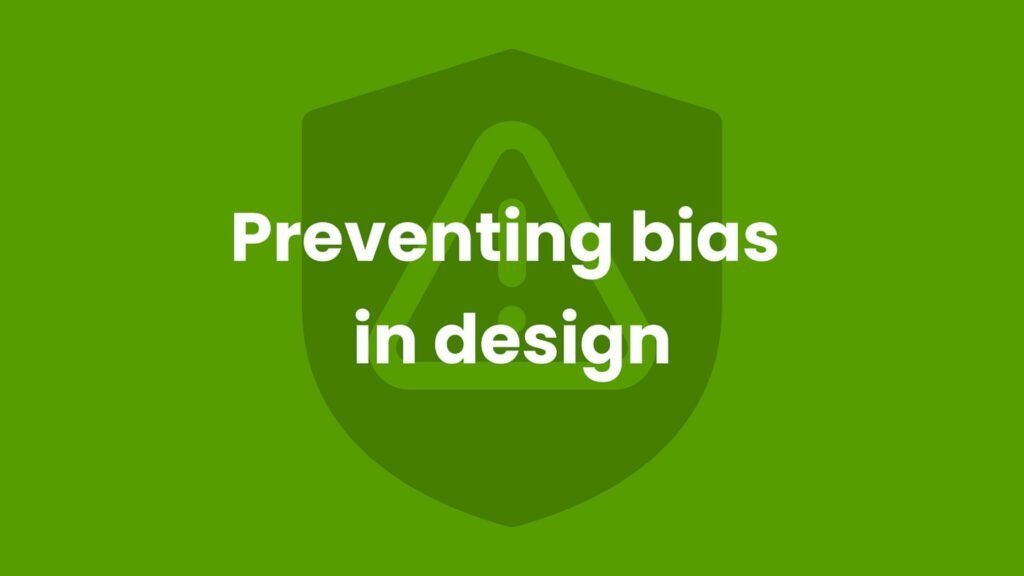How to Address Bias in Graphic Design
Bias in graphic design can have significant impacts on how messages are conveyed and perceived by diverse audiences. As designers, we have a responsibility to create work that is inclusive and free from prejudice. This article will explore practical steps to address bias in graphic design, ensuring that your work resonates positively with all viewers.
Understanding Bias in Graphic Design
What is Bias in Graphic Design?
Bias in graphic design refers to the unfair representation or exclusion of certain groups based on race, gender, age, culture, or other attributes. This can manifest in imagery, colour choices, typography, and overall design concepts. Addressing bias in graphic design is crucial for creating inclusive, respectful, and effective designs.

Why is Addressing Bias Important?
Addressing bias in graphic design is essential because it promotes fairness and inclusivity. When designs are free from bias, they resonate with a broader audience, fostering a sense of belonging and respect. Moreover, inclusive designs can enhance brand reputation and trust among diverse consumers.
Steps to Address Bias in Graphic Design
1. Educate Yourself on Diversity and Inclusion
Broaden Your Knowledge
To address bias in graphic design, start by educating yourself on diversity and inclusion. Understand the experiences and perspectives of different groups. Attend workshops, read articles, and engage with communities to gain insights into their needs and preferences. This knowledge will inform your design decisions and help you create more inclusive work.
2. Conduct Inclusive Research
Involve Diverse Perspectives
When researching for a project, involve diverse perspectives. Gather input from individuals of different backgrounds to ensure your design is representative and unbiased. This step is crucial in identifying potential biases and making informed design choices.
3. Use Diverse Imagery
Represent All Groups
One of the most effective ways to address bias in graphic design is by using diverse imagery. Ensure that your visuals include people of various races, genders, ages, and abilities. Avoid stereotypes and strive to portray individuals in a positive and respectful manner.
4. Choose Inclusive Colors
Consider Cultural Meanings
Colours can carry different meanings in different cultures. When selecting colours, consider their cultural significance and avoid choices that may be offensive or exclusionary. Inclusive colour choices can help in addressing bias in graphic design and make your work more relatable to diverse audiences.
5. Mind Your Language
Use Inclusive Typography
The language you use in your designs matters. Choose typography that is clear, readable, and respectful. Avoid fonts that may be associated with negative stereotypes or historical biases. Additionally, ensure that your written content is free from discriminatory language and inclusive of all groups.
6. Seek Feedback from Diverse Audiences
Get Multiple Viewpoints
Before finalizing your design, seek feedback from diverse audiences. This step is essential in addressing bias in graphic design as it provides you with different perspectives and identifies any unintentional biases. Use this feedback to refine and improve your work.
7. Continuously Evaluate and Improve
Reflect and Adapt
Addressing bias in graphic design is an ongoing process. Continuously evaluate your work and seek ways to improve. Reflect on past projects, learn from mistakes, and stay updated on best practices in inclusive design. This commitment to growth ensures that your designs remain fair and unbiased.
Creating an Inclusive Design Environment
Foster a Diverse Design Team
A diverse design team brings varied perspectives and reduces the risk of bias in graphic design. Encourage diversity in your hiring practices and create an inclusive work environment where all team members feel valued and heard. Collaboration among a diverse team can lead to more innovative and unbiased design solutions.
Promote Open Dialogue
Encourage open dialogue about bias in graphic design within your team. Create a safe space for discussions on diversity and inclusion. Regularly review projects together, identify potential biases, and brainstorm ways to address them. Open communication fosters a culture of awareness and continuous improvement.
Conclusion
In conclusion, addressing bias in graphic design is not just a professional responsibility; it is a moral imperative. By educating yourself on diversity and inclusion, conducting inclusive research, using diverse imagery, choosing inclusive colours, minding your language, seeking feedback, and continuously evaluating your work, you can create designs that are fair, respectful, and impactful. Fostering a diverse design team and promoting open dialogue further enhance your ability to address bias in graphic design. Embrace these practices to ensure your work resonates positively with all audiences and contributes to a more inclusive world.




Best AI Tool
Navigating the AI landscape can be overwhelming, but platforms like Best AI Tool offer a curated, reliable way to discover what works best for your needs-especially for professionals seeking efficiency and innovation.
manus ai
Manus AI is impressive for its autonomous task execution, especially for content and data workflows. For sports bettors, tools like DeerFlow AI also offer smart insights that enhance decision-making with real-time data.
fb88 soi kèo
Chức năng fb88 soi kèo giúp mình phân tích trận đấu chi tiết, tỷ lệ thắng cao hơn hẳn trước đây!